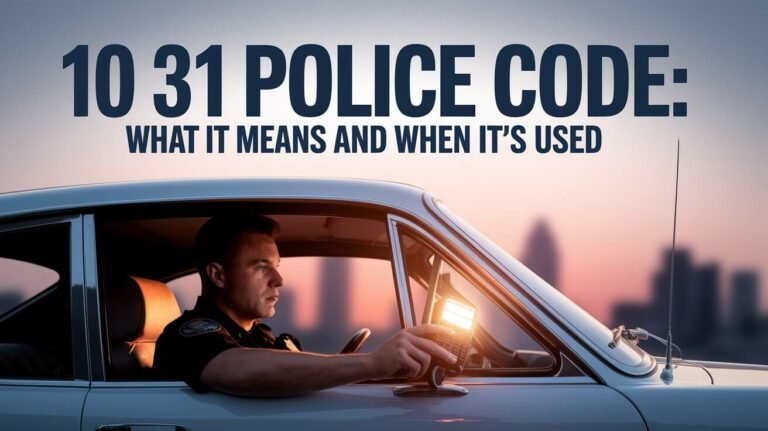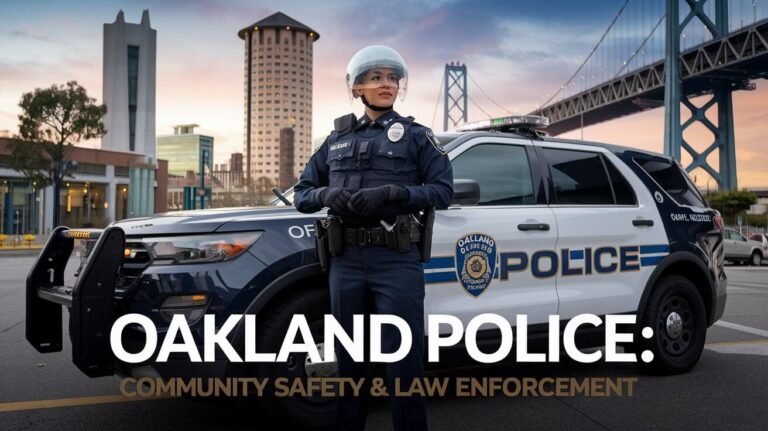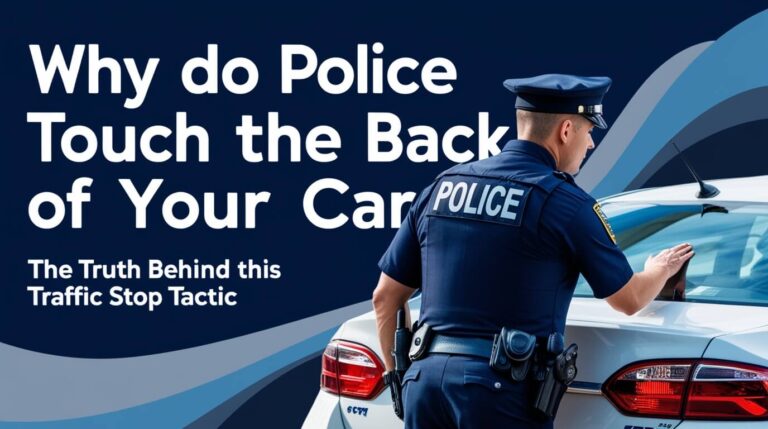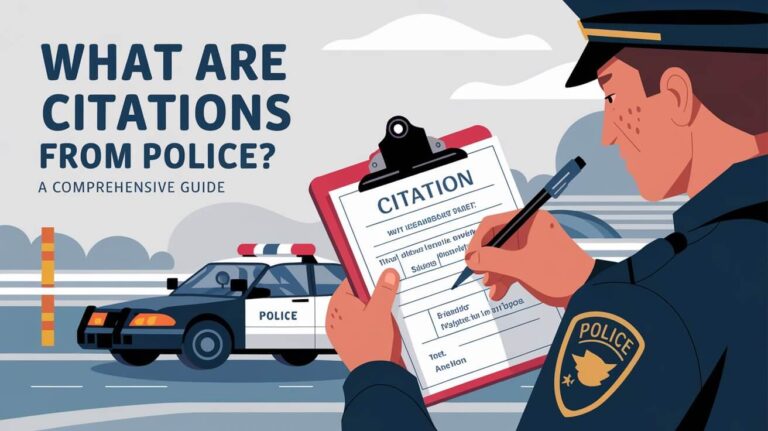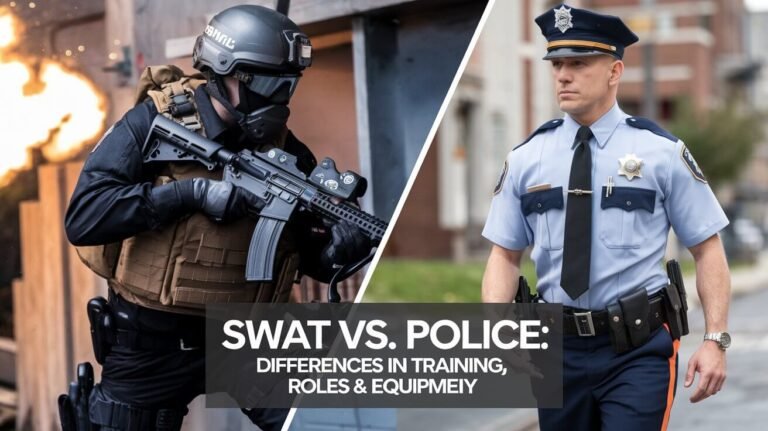Police Siren: Essential Emergency Alert Sound
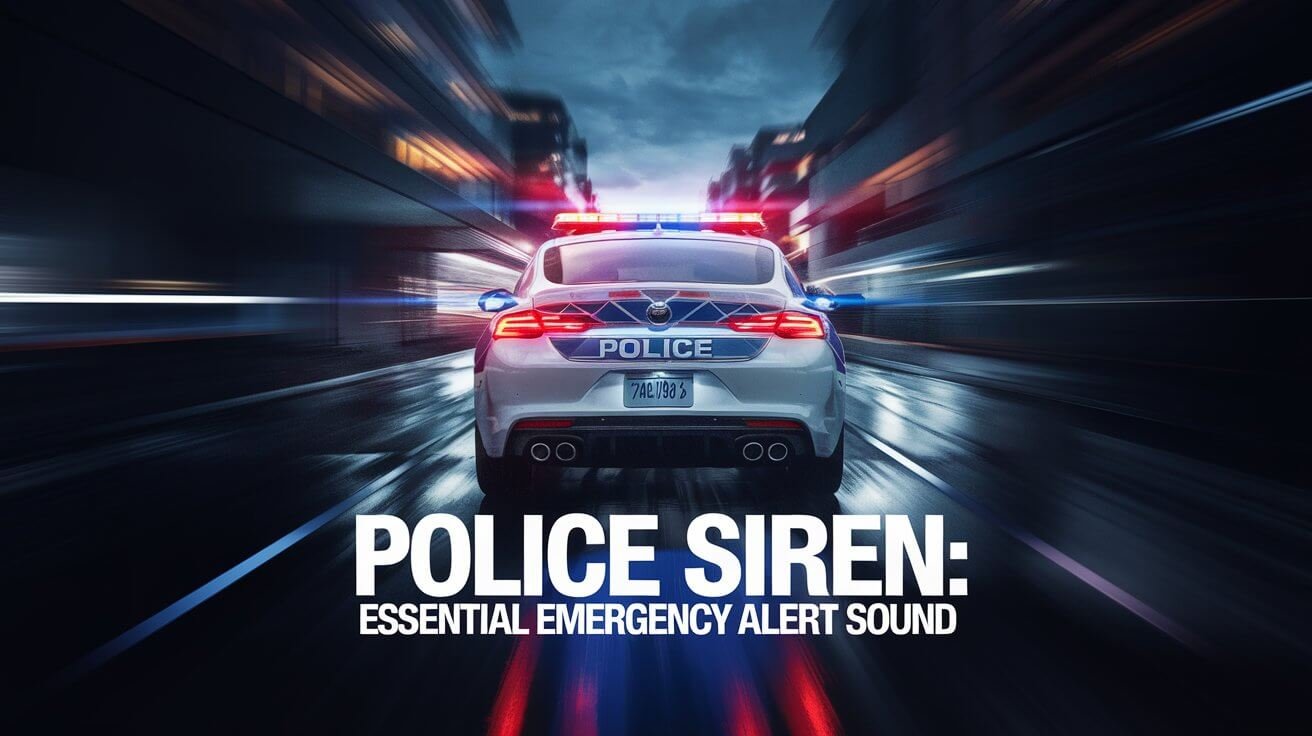
Emergency vehicle warning systems, like the police siren, are key to alerting people to dangers. They can reach sound levels of 110 to 120 decibels. This loud noise is meant to grab everyone’s attention.
Understanding the police siren is vital for public safety. It’s a critical part of emergency response.
In the U.S., police sirens are a big part of warning systems. They help police cars move quickly in emergencies. The siren is usually on the front of the car, making it louder than other emergency vehicles.
This guide will cover everything about police sirens. We’ll look at their history, parts, types, and rules. We’ll also talk about their importance in emergency services.
Evolution of Police Sirens
Police sirens have changed a lot over time. Each change brought new tech and designs. This shows how humans keep finding better ways to warn us.
First, there were mechanical sirens. They were hard to use but started the journey. Then, electronic sirens came along. They were easier to use and needed less fixing. Now, brands like HELLA and D&R Electronics Co Ltd. lead in making sirens better.
Key Milestones in Siren Development
- Introduction of mechanical sirens in the late 19th century
- Development of electronic sirens in the mid-20th century
- Advancements in digital technologies, enabling more efficient and effective warning systems
The story of police sirens is one of getting better and better. As tech keeps getting better, so will sirens. They will keep making us safer and more efficient.
Components of Modern Police Sirens
Modern police sirens are made to alert people quickly in emergencies. They have a speaker, amplifier, and control system. These parts work together to make the sounds we know from emergency vehicles.
The sound of modern sirens depends on several things. This includes the siren amplifier’s size and power, the car’s build, and where the siren is placed. For example, the Federal Signal Rumbler can be as loud as 135 decibels. This shows how important the details of police siren parts are.
Modern police sirens have some key features. These include:
- Higher-frequency sirens that are more piercing and effective in urban environments
- Adaptive sound profiles that can be adjusted based on real-time data, such as traffic conditions and ambient noise levels
- Advanced acoustics and directional sound technology that can target specific areas more effectively
These features show how police siren technology has changed. From old mechanical sirens to new electronic ones, technology keeps improving. We might see even more advanced police sirens in the future, like ones that use AI to adjust sounds based on real-time data.
| Police Siren Component | Description |
|---|---|
| Speaker | Produces the sound waves that are emitted by the siren |
| Amplifier | Increases the power of the sound waves to ensure they can be heard clearly |
| Control System | Regulates the operation of the siren, including the type of sound produced and the volume |
Types of Police Siren Sounds
Police sirens alert us to emergencies. Different sounds are used in different places. The wail is common in rural areas, while the yelp is better for cities. This is because the yelp’s short bursts can bounce off walls, making it easier to hear.
Police sirens are used for many reasons, like stopping traffic or chasing cars. The hi-lo siren, or “European style,” is not as common as the yelp and wail. The power call siren is also less used, seen as outdated.
Wail Pattern Analysis
The wail pattern has a slower, alternating tone. It’s best for rural areas because it travels far. It’s used when a loud, clear signal is needed.
Yelp Configuration Details
The yelp is perfect for cities because its short bursts bounce off walls. This makes it easier to hear. It’s great for situations where a quick, loud signal is needed.
| Siren Type | Environment | Description |
|---|---|---|
| Wail | Rural | Slower alternating tone, suitable for long-distance travel |
| Yelp | Urban | Short bursts, bounces off walls, enhances audibility |
| Hi-Lo | European style | Less frequently used, characterized by a unique tone |
Power Requirements and Installation Specifics
Understanding the power needs is key for police siren performance. Most modern sirens, like the Remote Police Siren from Extreme Tactical Dynamics, need 100 watts to work well. Using the right siren speakers is important to avoid issues and keep the warranty valid.
Installing a police siren right involves the wiring and where you mount it. The siren’s sound can change based on its position, like on a police car’s bumper. Emergency vehicle sirens can get as loud as 110-120 decibels, with police sirens being the loudest.
Important things to think about for police siren installation include:
- Choosing the right siren speakers for the best sound
- Doing the wiring and mounting right to avoid problems and keep everyone safe
- Knowing the siren’s power needs, like 100 watts for the Remote Police Siren
Knowing about power needs and installation helps keep emergency vehicles safe. With the right siren, officers can handle emergencies better. They know their sirens will get the attention of drivers or crowds, helping keep everyone safe.
Sound Physics Behind Police Sirens
Police sirens work on sound physics, including how sound waves spread and their decibel levels. The sound from a siren comes from waves with different frequencies overlapping. This creates a wavering sound called beats. The Doppler effect also changes how we hear the siren as the car moves towards or away from us.
Decibel Levels and Range
Police sirens have gotten louder over time, reaching up to 122dB. This is because city noise levels have also gone up. It’s important for sirens to be loud enough to cut through the background noise.
| Year | Decibel Level |
|---|---|
| 100 years ago | 85dB |
| 1970s | 122dB |
Sound Wave Propagation
Understanding how sound waves spread is key to police sirens. The frequency of a sound wave affects its pitch. The wavelength impacts how we hear it. The beat frequency from a siren is the difference between two frequencies.
For example, if two frequencies of 440 Hz and 444 Hz overlap, the beat frequency is 4 Hz. This means there are four beats per second.
Legal Regulations for Police Sirens
Police siren rules are set to keep everyone safe and stop sirens from being misused. A survey by AAA found 85% of drivers think it’s illegal for regular people to have a cop horn. This shows how important it is to follow these rules and know what happens if you don’t.
Only those with the right to do so, like police and firefighters, can use sirens. Using a police horn for anything else is against the law. It can cause confusion and danger on the road. Laws about using police sirens are strict and vary by place.
Here are some important things to remember about police siren laws: * Changing your car horn to sound like a police horn is against the law and can get you in big trouble. * If you use a police siren without permission, you could face fines, criminal charges, or even lose your license. * Learning how to use horns and sirens correctly can help prevent accidents with police cars. * Even with special rules, drivers of emergency vehicles must always think about keeping everyone safe on the road.
Maintenance Requirements
Keeping police sirens in good shape is key for emergency vehicles to work right. It’s important to test sirens often to make sure they sound good and loud enough. You should also check the electrical parts and speakers for damage.
When sirens break, it can be because of bad speakers, control problems, or loose wires. To fix these, you might need to replace parts, tighten wires, or adjust settings. Regular checks can catch problems early, keeping vehicles ready to go.
Regular Testing Protocols
Police sirens should be tested for about a minute each month. This makes sure they’re working right. After each use, sirens should be checked for any issues. This way, sirens always warn the public effectively.
Common Technical Issues
- Faulty speakers or amplifiers
- Malfunctioning control systems
- Loose electrical connections
Fixing these common problems and testing sirens often keeps them working well. This is very important for safety. Police sirens help alert people to dangers and clear the way for responders.
Emergency Response Protocols
Emergency response protocols are key to keeping people safe in emergencies. Police sirens are a big part of these plans. They warn people that emergency vehicles are coming. The rules for using police sirens help keep everyone safe.
When emergencies happen, police sirens help emergency vehicles get through. They make a loud sound that grabs attention. A 2016 study found police sirens can be as loud as 110 to 120 dB.
Important things to think about in emergency plans include:
- Clear communication: Emergency teams need to talk well with each other and the public.
- Public awareness: People need to know about emergencies and act safely.
- Vehicle safety: Emergency cars must have sirens and lights to warn others.
Sticking to emergency plans and using sirens right, responders can act fast and safely. This helps save lives.
Technological Innovations in Siren Systems
Recent advancements in siren technology have changed how police agencies handle emergencies. Now, sirens can be turned on and off with more accuracy. This makes emergency responses more efficient. Sirens also work better with smart city systems like traffic management and surveillance cameras.
The “Rumbler” device, used by the Omaha Police Department and NYPD, makes sirens more audible. It creates deep sounds that go through modern cars. Also, License Plate Recognition (ALPR) technology helps find stolen cars faster by comparing plates with databases.
Benefits of Digital Control Integration
- Improved precision in siren activation and deactivation
- Enhanced integration with other smart city infrastructure
- Increased safety for emergency responders and the public
As technology advances, police sirens will keep getting better. It’s important for police to use the latest tech. This way, they can respond faster and safer, saving lives and keeping communities safe.
| Technology | Description | Benefits |
|---|---|---|
| Digital Control Integration | Enables precise control over siren activation and deactivation | Improved safety and efficiency |
| ALPR Technology | Automates license plate comparison with databases | Reduced time for manual checks, increased accuracy |
Safety Considerations for Operators
When using police sirens, safety is key. It’s vital for the operator’s safety, as driving in emergencies is getting riskier. Even with sirens and lights, emergency vehicles must ask drivers to move over.
Operators must follow strict safety rules. This means wearing protective gear, checking the vehicle often, and sticking to rules. For example, everyone must wear a seatbelt while moving, and sirens and lights are on during emergencies.
Some important safety tips for operators are:
- Always stop at red lights, stop signs, or flashing red lights
- Be extra careful when more than one vehicle is responding to a call
- Don’t text or message while driving
- Always control the vehicle and give way when needed
Operators also need to watch their surroundings. They should check all lanes before crossing an intersection. They should also be careful around hazards like stopped school buses with flashing lights.
Focusing on safety, we can lower the chance of accidents and injuries. It’s critical for operators to stay alert and follow rules to keep themselves and others safe.
| Safety Protocol | Description |
|---|---|
| Wearing seat belts | Ensures personnel are securely seated and buckled during apparatus movement |
| Activating warning lights and sirens | Alerts other drivers of the emergency vehicle’s presence and requests right-of-way |
| Coming to a complete stop at intersections | Ensures safety and yields right-of-way to other vehicles or pedestrians |
Global Variations in Police Siren Standards
Police sirens are key for law enforcement around the world. They warn people of an emergency vehicle’s approach. But, police siren standards vary by country, influenced by local laws, technology, and preferences.
Different regions have their own siren standards. In Europe, the “Hi-Lo” siren is common. In the U.S., “yelp” and “wail” sirens are used more. These choices depend on the area’s needs, like terrain and population density.
Regional Specifications
Here are some key siren standards by region:
- European specifications: The “Hi-Lo” siren is widely used, and the European Union has standards for sound levels and frequencies.
- Asian market differences: In some Asian countries, sirens have a unique sound to distinguish them from other emergency vehicles.
- American requirements: In the United States, the Federal Motor Vehicle Safety Standards (FMVSS) set rules for police sirens, including sound levels and warning signals.
Knowing these global siren standards is vital for effective communication and safety. Law enforcement can better serve their communities by understanding these differences.
Endnote
We’ve covered a lot about police sirens in this guide. We looked at how they’ve changed over time and what makes them work. From old mechanical sirens to today’s digital ones, we’ve seen how they help in emergencies.
Learning about the science behind police sirens, the laws that guide them, and how to keep them working is key. This guide has shown how important these devices are for keeping us safe. We’ve also talked about new tech, safety tips, and how they vary around the world.
If you’re an emergency worker, a concerned citizen, or just curious, this police siren guide is for you. It’s filled with useful info to help you understand and support these vital tools. Remember, when you hear a police siren, it’s time to act. Let’s all work together for a safer community.
Common Questions
What is the purpose of the police siren?
The police siren alerts the public and helps coordinate emergency services. It’s used in accidents, natural disasters, and crimes in progress.
How have police sirens evolved over time?
Police sirens have changed a lot. They started with mechanical models and moved to electronic and digital systems. Each change made them better at warning people.
What are the key components of modern police sirens?
Modern sirens have a speaker, amplifier, and control system. These work together to make the sounds we know from emergency vehicles.
What are the different types of police siren sounds?
There are many sounds, like wail, yelp, and hi-lo. Each is used for different emergencies to alert and coordinate responses.
How are police sirens properly installed?
Installing sirens right is key. You need to think about power, wiring, and mounting. This ensures they work well and safely.
What is the science behind police siren sounds?
The science of siren sounds is important. It includes decibel levels and how sound travels. These factors help make sirens effective.
What are the legal regulations surrounding the use of police sirens?
Laws control when and how sirens are used. This is to keep everyone safe and avoid legal trouble.
How are police sirens maintained and serviced?
Sirens need regular checks and repairs. This keeps them working right. Following guidelines is important for this.
How are police sirens integrated into emergency response protocols?
Sirens are key in emergency responses. They alert people and help coordinate services. This is why clear communication is so important.
What are the latest technological innovations in police siren systems?
New tech, like digital control and smart city links, is making sirens better. They’re more efficient and safe now.
What safety considerations are important for operators of police sirens?
Safety is top for siren operators. They should wear protective gear, do regular checks, and follow rules. This reduces risks.
How do police siren standards vary globally?
Standards for sirens vary worldwide. They depend on local laws, tech, and preferences. This creates both challenges and chances globally.

